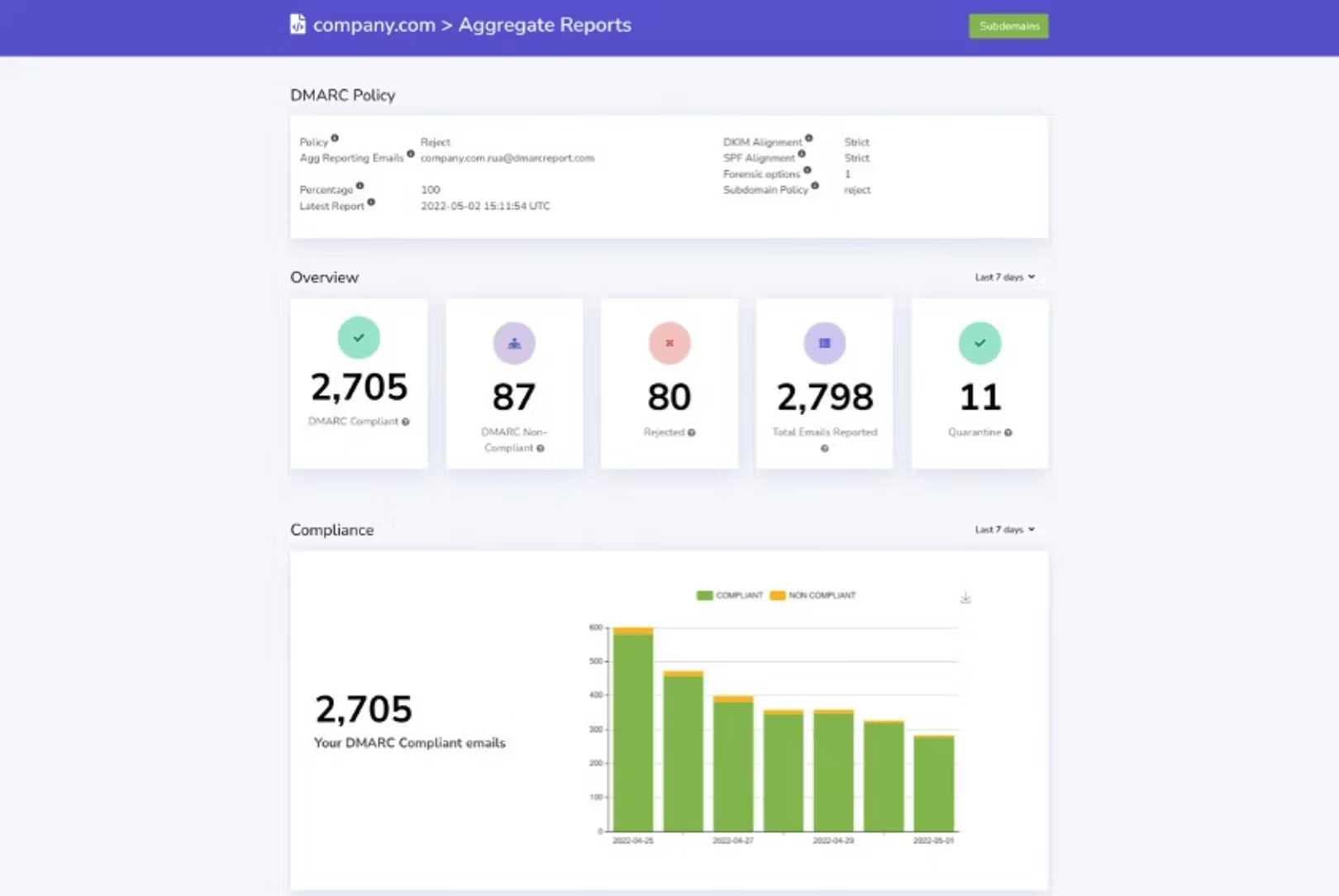User experience
Setting up DMARC Report is generally a straightforward process, guided by step-by-step instructions for adding DNS records. The interface, while functional and comprehensive, has been described by some users as slightly dated, though we found it highly usable for daily tasks. Navigation is logical, allowing us to easily locate configuration options, reports, and alerts.
The system aims to simplify the often-complex world of email authentication, presenting data in a digestible format with clear visual cues for compliance status. Despite some minor aesthetic feedback, the focus on usability for DMARC management is evident, reducing the technical barrier for many. The automated weekly reports are particularly useful for quick status checks. It is well-suited for users who prefer a managed service that streamlines the entire DMARC process without requiring extensive command-line interaction or server management.
Open-DMARC-Analyzer offers an experience tailored for technically proficient users who are comfortable with self-hosting and server management. The initial setup involves deploying the application on a web server with PHP and MariaDB, which requires a solid understanding of these technologies. Once installed, the user interface provides a clear, no-frills visualization of DMARC reports. We appreciate its simplicity and directness, as it presents the parsed data without excessive abstraction.
The focus is purely on DMARC data, making it efficient for specific DMARC analysis. However, it lacks the guided onboarding and user-friendly helpers found in commercial products. Users need to be self-reliant for troubleshooting, updates, and any extensions of functionality. For those accustomed to open-source tools and command-line interfaces, the experience is empowering, offering granular control. For others, the lack of hand-holding might be a significant hurdle.











































 4.8 / 5(325)
4.8 / 5(325)
 0 / 5(0)
0 / 5(0)



